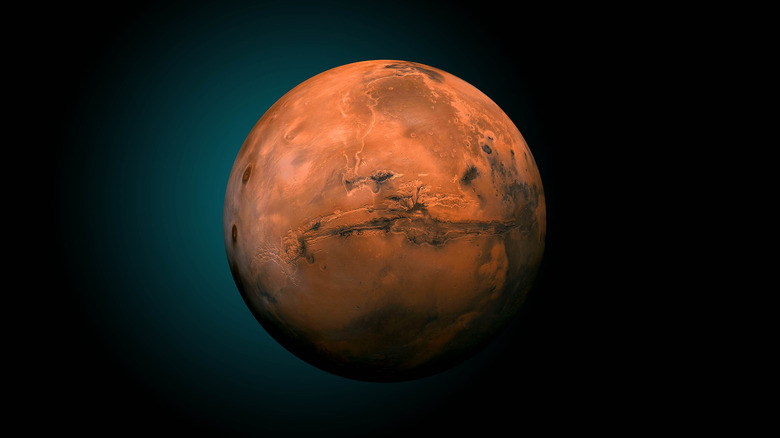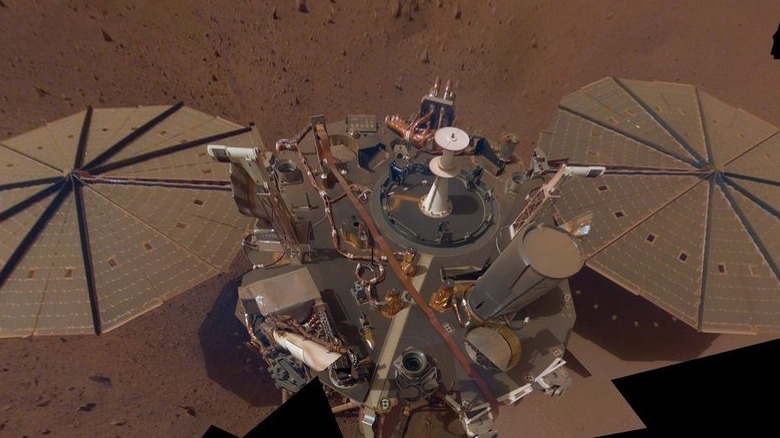The Interesting Seismic Activity We Started To Detect On Mars
Earth isn't the only planet that is shaken by violent quakes. Researchers know that Mars also experiences quakes, called marsquakes, and studying these can help understand the interior of the planet. NASA's InSight mission has been studying marsquakes since its landing in 2018, and has detected frequent seismic activity on the planet.
Marsquakes aren't exactly equivalent to earthquakes, however. The Earth has tectonic plates, floating pieces of the planet's crust that move around and cause earthquakes when they collide or rub together, as well as creating geographical features of the planet like mountains and volcanoes (via National Geographic). Mars doesn't have plate tectonics –- instead, it has one solid plate of crust but inside it has a molten core. Researchers theorized that as the planet cools, fractures can form in the crust plate and these create marsquakes (via JPL).
Now, recent research from astronomers at the Australian National University (ANU) and the Chinese Academy of Sciences has identified previously undetected marsquakes which may be related to volcanic activity beneath the planet's surface.
"We found that these marsquakes repeatedly occurred at all times of the Martian day, whereas marsquakes detected and reported by NASA in the past appeared to have occurred only during the dead of night when the planet is quieter," said one of the study's authors, Hrvoje Tkalčić (via ANU). "Therefore, we can assume that the movement of molten rock in the Martian mantle is the trigger for these 47 newly detected marsquakes beneath the Cerberus Fossae region."
Magma beneath the Martian surface
As the marsquakes are happening throughout the day, the researchers believe that the evidence points to a different mechanism generating the quakes rather than the tectonic forces of the planet cooling. They think that the molten rock beneath Mars's surface is moving around and creating the quakes.
They used data from the InSight lander, but ran it through a new algorithm to detect more marsquakes. This was able to pick up some very small seismic events (via ANU).
By studying these small judders, researchers can learn more about the interior of Mars. And that can teach them about Mars's history. "Knowing that the Martian mantle is still active is crucial to our understanding of how Mars evolved as a planet," Tkalčić said. "It can help us answer fundamental questions about the solar system and the state of Mars' core, mantle and the evolution of its currently-lacking magnetic field."
The question of Mars's lack of magnetic field is an important one because Earth's magnetic field was essential for the development of life here. The magnetosphere of Earth shields us from dangerous space radiation, but Mars seems to have lost its magnetosphere some time ago for reasons we are still working to understand (via Universe Today).
"Therefore, understanding Mars' magnetic field, how it evolved, and at which stage of the planet's history it stopped is obviously important for future missions and is critical if scientists one day hope to establish human life on Mars," Tkalčić said.

